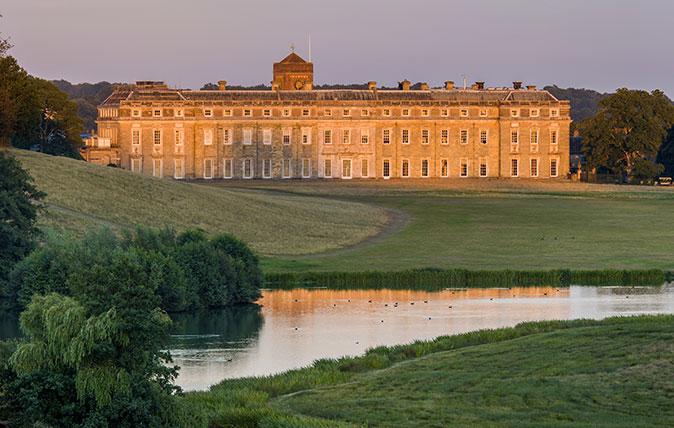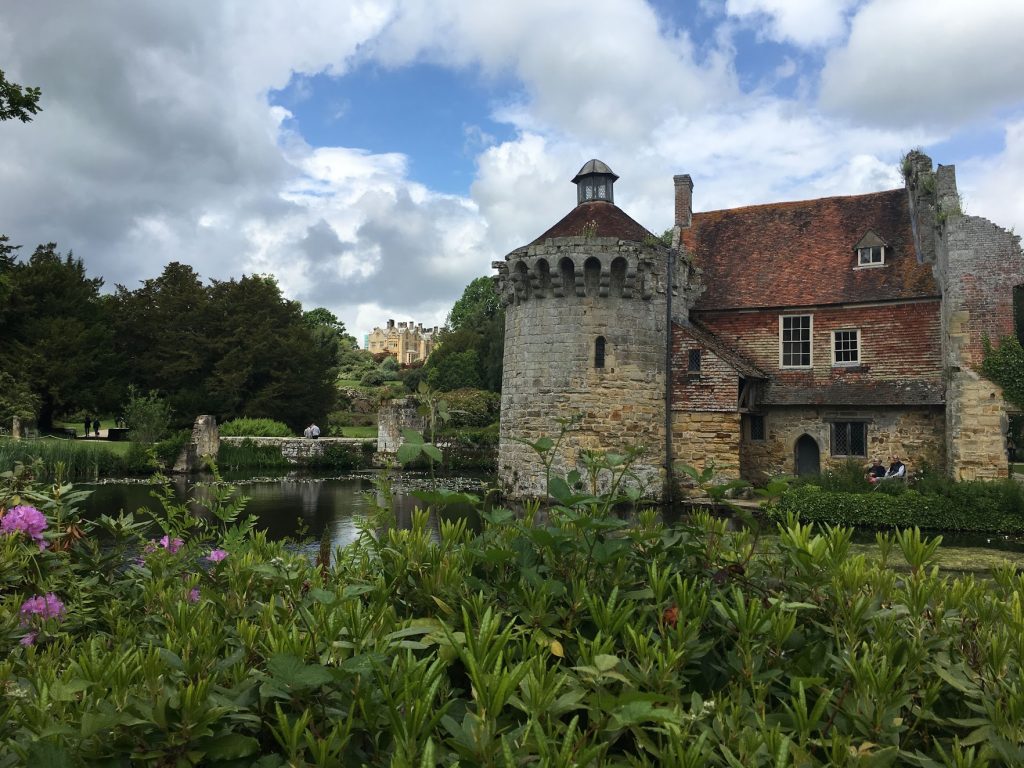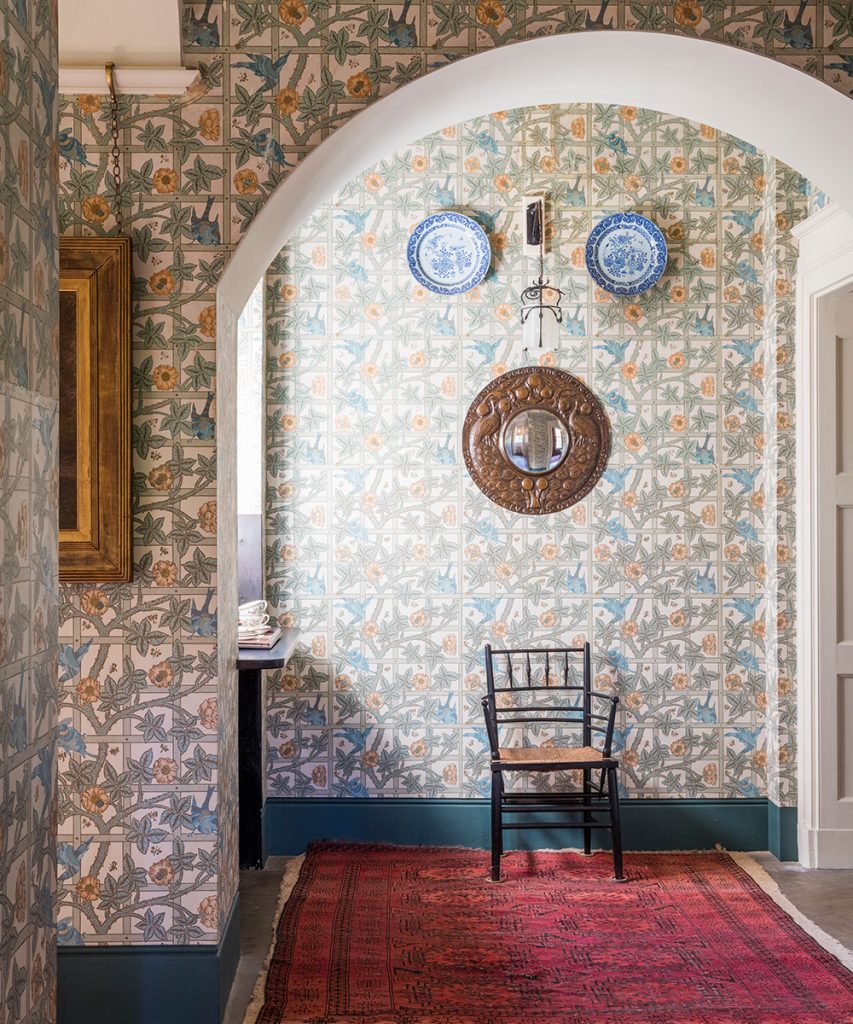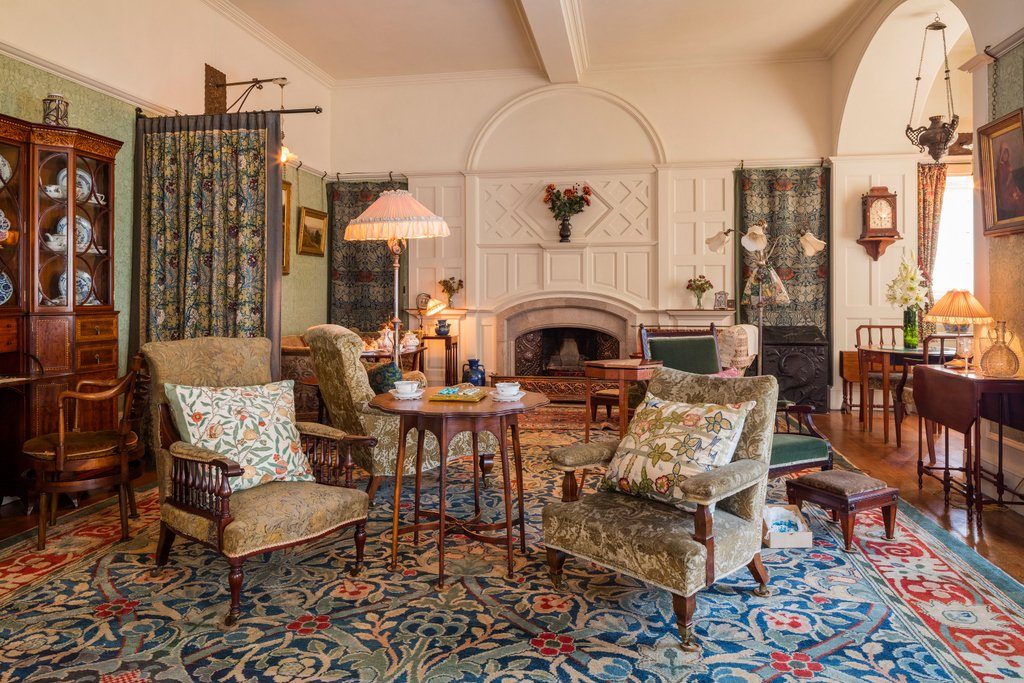
Spring is rolling into summer, and although the weather may not be participating, the fields and hedgerows are lush and green – even more so, perhaps, thanks to days of heavy rain. It wasn’t exactly what we were expecting though, for a long weekend in Sussex in mid June…
On the first day of our adventure on the mainland, we awoke to persistent drizzle. A long hike through the countryside promised nothing but damp heads, soggy feet and the onset of pneumonia. So, we changed course and headed to Petworth House. On the cusp of a pretty village of the same name, this imposing stately home lies in the heart of the South Downs National Park, in West Sussex. Once the country estate of the Earls of Northumberland, this treasure trove of art and history is now in the hands of the National Trust, along with a 700 acre deer park designed by the 18th century landscape architect Lancelot Brown. More commonly known as ‘Capability’ Brown, he was renowned for telling every potential client that his property had ‘capability’ for improvement.
Back in the 12th century, Petworth Estate was bequeathed to Joscelin of Louzain by his sister Adeliza, the widow of Henry I. Joscelin then married Elizabeth Percy, heiress to one of the most powerful noble families, adopting the Percy name and all its estates. IN 1377, his descendant, Henry Percy, was created Earl of Northumberland at Richard II’s coronation. Prominent throughout the Tudor and Stuart dynasties, several reckless – or audacious – Percys would spend their time both courting and yet miraculously dodging political and financial disaster. By 1750, they were one of the wealthiest families in England, but with the death of Algernon, 7th Duke of Somerset, the vast Percy estates and titles were divided between the Duke’s only surviving daughter and her first cousin. A branch of Percy descendants continue to live at Petworth House to this day, although there is barely any resemblance to the house Queen Adeliza gave to her younger brother almost a thousand years ago.
In the 17th century, the medieval country house was inherited by Lady Elizabeth Percy and her handsome husband, the conceited and vainglorious Charles Seymour, 6th Duke of Somerset. Seymour took to his exalted new life like a duck to water, and promptly proceeded to enlarge the house at Petworth in the manner of Versailles, retaining only the beautiful, medieval chapel as a favour to his wife, adding grandiose state rooms to display the family’s wealth, taste and royal connections. Described by a contemporary as ‘a man in whom the pride of birth and rank amounted almost to a disease,’ he turned the original manor house into a palace, and employed the King’s own gardener to design structured, formal gardens at the front of the mansion, complete with ramparts, terraces, and ornamental gardens.

Barely fifty years later, Charles Wyndham, 2nd Earl of Egremont inherited Petworth, he commissioned Capability Brown to modernize the gardens, relegating the ostentatious French style to the rubbish heap and replacing it with Brown’s signature informality. Parterres, meticulously manicured lawns and hedges, elaborate fountains, sharp edges and symmetry gave way to ha-has and grassland as far as the eye could see, with soft curves from surrounding hillocks and a scattering of carefully tousled ever-green trees. This new form of landscape gardening – idealizing and styling the landscape so harmoniously to make it look as if it had been created naturally – became hugely popular with the British aristocracy, and the fashion spread back to France. Renowned water-colourist, J.M.W. Turner, was one of the Earl’s protégés. Amongst other things, the Earl commissioned him to paint several views of the park, which were then hung at eye level in the dining room, for the appreciation of those not facing the tall windows overlooking the park itself. These remain in situ, although they are currently owned by the Tate.
Capability Brown’s pastoral landscapes celebrate the dominion of mankind over nature, yet without too much primping or accessorizing. The scenes are peaceful and placid, depicting sweeping vistas of lawn or grassland, punctuated by stands of stately cedars and serpentine lakes. By the beginning of the 19th century, however, a reaction had set in against Capability Brown’s overly tidy and ‘facile compositions.’ Such natural simplicity no longer impressed. Apparently, a garden required more drama to be truly appealing. The Picturesque style began to emerge, and garden designers looked for uplifting drama and heightened allure. Ruins, follies and classical temples, adding a touch of mystery and charm, became all the rage.
Scotney, on the border of Kent and East Sussex, provides all these things by the barrowful. The original medieval manor house was built in about 1380. Tucked into a secluded valley, it sits on a small island, the surrounding moat fed from the little River Bewl. (One guide I spoke to suggested that the Bewl was once wide enough to transport large boats from the Medway to the castle, but given its meagre size today, I suspect this is apocryphal.)
The manor was fortified during the 14th century, when the 100 Years’ War brought the threat of a French invasion, and subsequent owners continued to enlarge and renovate the original manor. In 1778 it was purchased by London lawyer, Edward Hussey. Forty years later, Scotney was inherited in 1817 by his grandson, Edward Hussey III, after the tragic deaths of both his father and his grandfather in the same year. Still only a child, he was taken to live on the coast by his mother who, not surprisingly, had few happy memories of the secluded medieval manor house.

As an adult, Edward Hussey III moved back to Scotney. Faced with the outdated, impractical and doubtless crumbling manor house, he decided to build an entirely new home on a terrace overlooking the old castle, quarrying the honey-coloured sandstone from the hillside below. In 1837, he commissioned architect Anthony Salvin to design it in the mock Elizabethan style popular at the time, while William Sawrey Gilpin took charge of creating the garden. As part of the surrounding landscaping, the remains of Scotney Castle were deliberately ravaged to make it a feature of the new garden; a picturesque folly in the glen. The quarry, too, was embellished and beautified with ferns, fuchsias, azaleas, magnolias. Today, the gardens overflow with colour from banks of spring daffodils, to the summery scented orange Ghent azaleas and deep blue hydrangeas, to the autumnal russets of liquidambars and Japanese acers. The ruins have been softened with honeysuckle, climbing roses and wisteria, and the moat is awash with water lilies, as prolific as those in Givenchy, its banks edged in yellow iris and marsh marigolds.
Instead of the once popular pastoral landscapes, this garden is a maze of winding woodland paths, mossy nooks and hidden gullies. It feels utterly magical. And when the sun, putting in a brief appearance, sparkles across the water, the castle’s round tower is reflected perfectly in the moat. During this brief hiatus in the pitiless rain, I feel the urge to go in search of Sleeping Beauty or possibly Rapunzel in the fairy-tale castle, so enchantingly tucked among the lush and lustrous rhododendrons, and framed by tall and elegant oak trees. And what about a picnic basket and a bottle of bubbles?

Only fifteen minutes down the road and across the border into Sussex, is Pashley Manor. Once upon a time, Pashley was a moated hunting lodge owned by the Bullen (or Boleyn) family. In 1540, the property was sold, and the new owner built a Tudor house on higher ground. In 1981, the Sellick family came to Pashley, and were faced with the monumental task of taming eleven acres of garden long neglected garden. Over a thousand trees were uprooted during the notorious storm of 1987, but this at least gave the Sellicks some space to recreate their exquisite English country garden. From the house, the focal point is the lake, or moat, and an arched bridge takes us over the water to a small island. Beneath the trees, where the old hunting lodge once stood, we found a temple beside a lovely statue of Anne Boleyn.
Wandering down a narrow woodland path, we come across wood nymphs galore, roughly hewn from gnarly old branches and nailed to living trees. Another area is scattered with statues of children tucked beneath a tree with a book or leap-frogging over a tree stump. A large stag stands forever at bay on the shore opposite. The walled kitchen garden has been revived and is now filled with a dense collection of artichokes and espaliered fig trees, vegetables, herbs, sweet peas and edible pansies. A terrace beside the café is draped in wisteria and provides the perfect place to sit in the sunshine and enjoy the views across the lawn to the moat, its island, and the fields beyond.
We then have the opportunity to accompany the lady of the manor through the multiple walled garden ‘rooms’ brimming with roses of every conceivable colour and variety – including some new blue ones which are yet to flower. While she leads the way, providing tips to gardening enthusiasts, I drop back to bury my nose in every bloom, the older varieties providing all the scent, the newer innovations providing longevity but little aroma. It is immediately apparent that much time, effort and love has been lavished on maintaining every inch of this beautiful garden. We leave reluctantly.
Attempting to take cover from the inevitable showers that have plagued us all weekend – English summer my welly boot! – we found yet another convenient National Trust property on our route, and yet another period in English horticultural history. Standen House, south of East Grinstead, has a well-established, 12 acre garden, but given the continuing deluge, we decide to head into the house, only to find that the textile designer and socialist William Morris had considerately brought the outdoors inside.

Standen House, built by Philip Webb in the 1890s, is literally embowered in William Morris designs. William Morris was mad about nature, a passion that was translated into interior decoration; his designs paper the walls, carpet the floors, frame the windows and cover the furniture with stylized sunflowers, ferns, rambling roses, larkspurs and poppies, often in single colours, occasionally in a broader palette.
Bringing nature into the home first became popular in Victorian England and would become highly fashionable among the followers of the new Arts & Crafts Movement. Essentially, the A&C aficionados were reacting against industrialization and its economies of scale and mechanized speed, which they believed lacked both quality and integrity, disconnecting its workers from both life and nature. Instead, the Arts & Crafts Movement supported traditional craftsmanship and the beauty of using natural motifs, focusing on small workshops and old-world techniques.
James Beale and his wife Margaret, having commissioned this illustrious team to build and decorate their new summer house in the depths of West Sussex, worked closely with both architect and interior designer to create a comfortable, modern family home. Today, immersed in an era of beige and monochrome symmetry, it is difficult to appreciate the overwhelmingly, almost epileptic fussiness of Morris’s designs and his total disregard for colour schemes, as walls and floors and furniture collide in a kaleidoscope of contrasting, conflicting, discordant colours and patterns. But it was definitely a thorough lesson in Arts & Crafts decor.

So, quite unintentionally, we enjoyed a fascinating journey through the development of the English country garden from the 17th to the 21st century. An unexpected treat indeed. Next time, though, I must remember my umbrella!
*With thanks to Google Pics and the National Trust for photos of Petworth and Standen, and to the One & Only for his panoramic view of Pashley.
